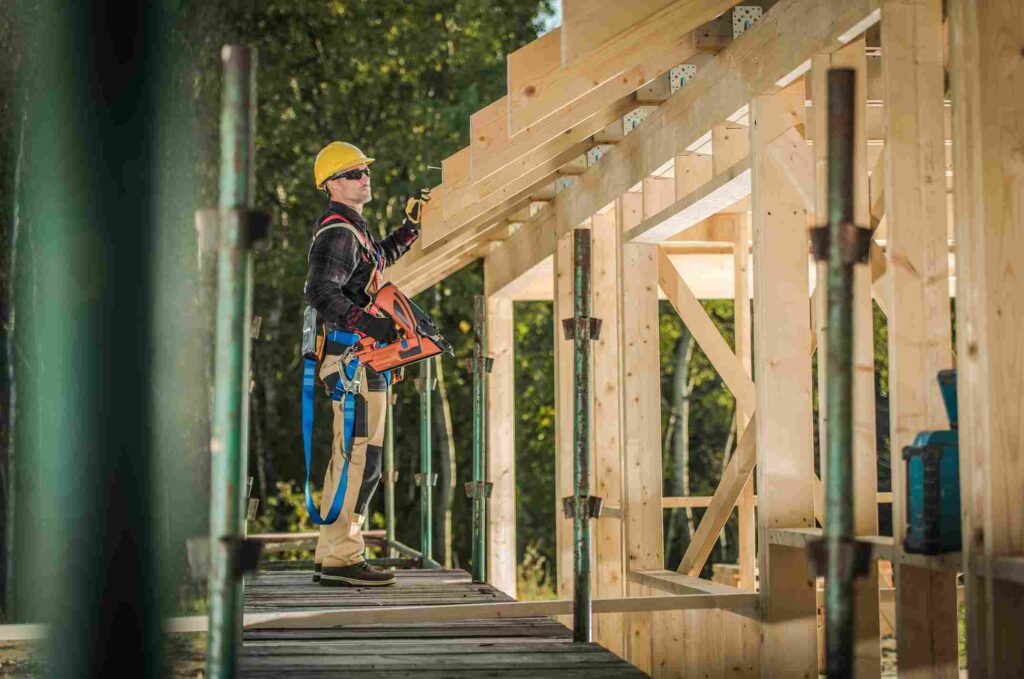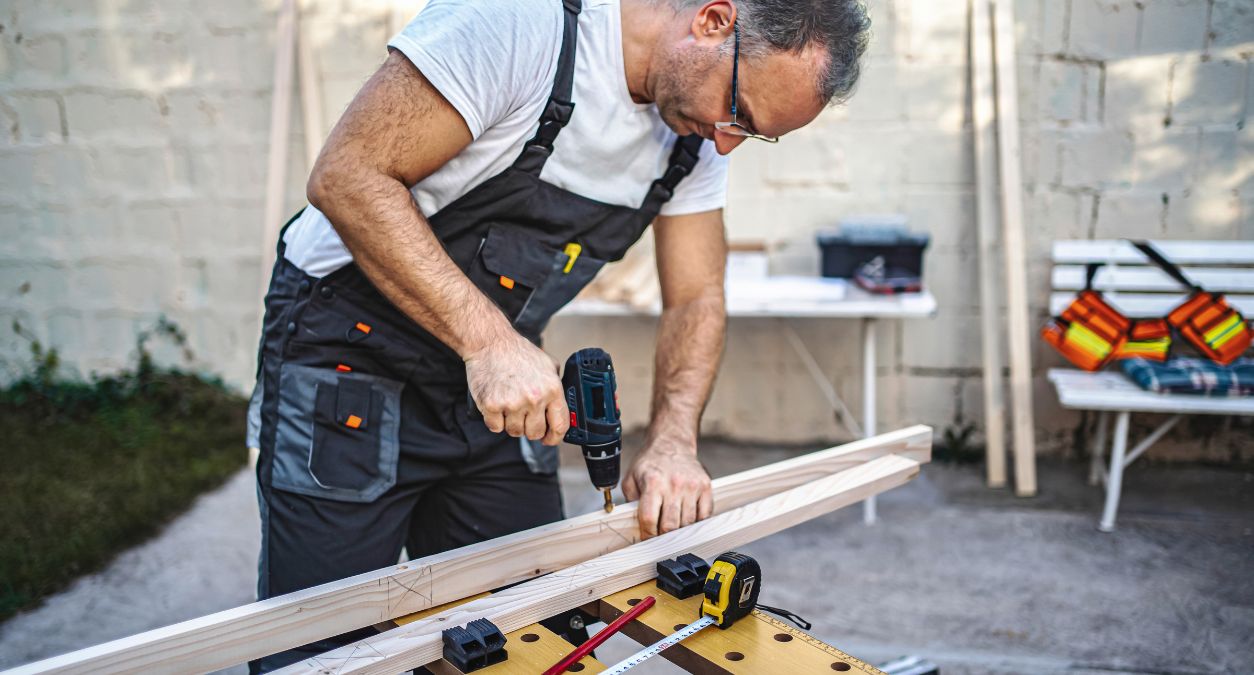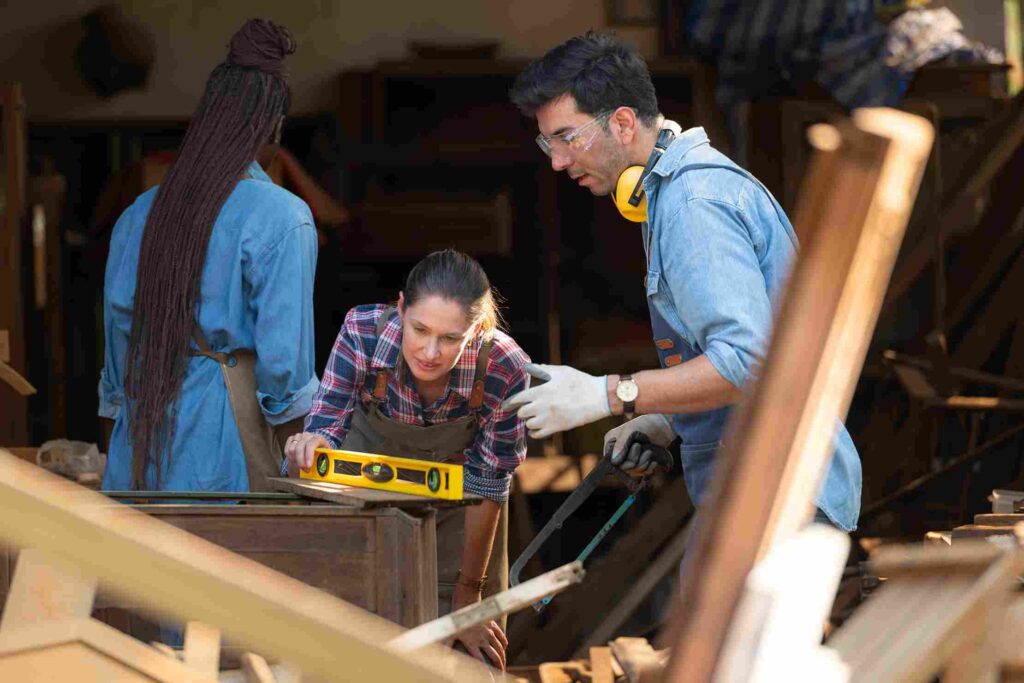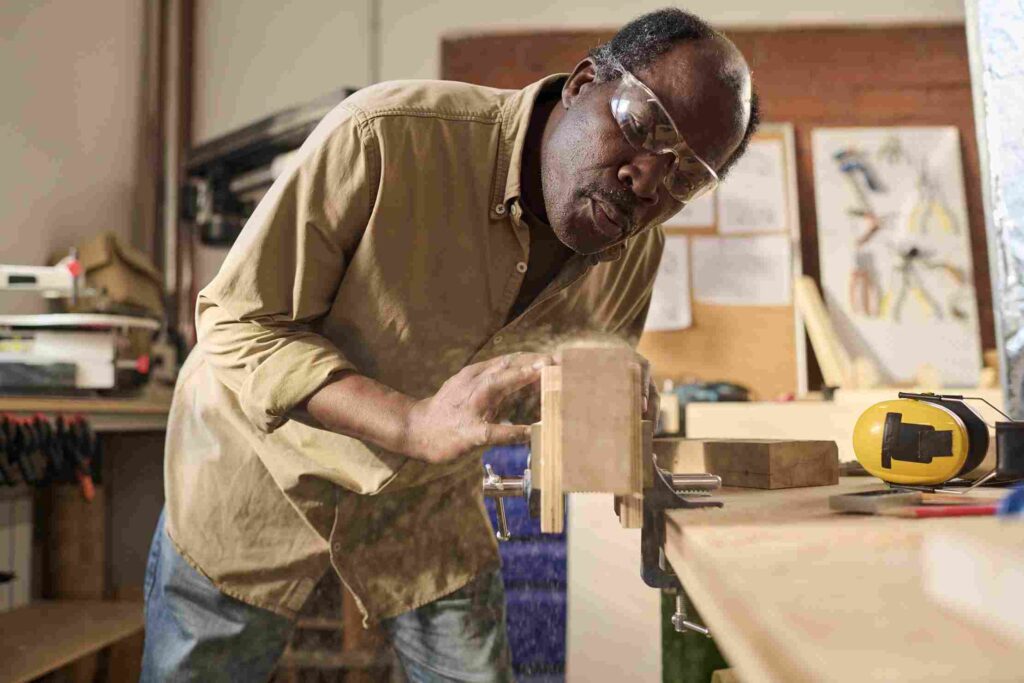Table of contents
Table of contents
Carpentry and joinery are two of the most important trades in the construction industry. While they both involve working with wood, the roles and responsibilities of carpenters and joiners are distinct. If you’re considering a career in these trades, understanding what each profession entails, as well as how much you can expect to earn and how to boost your income, is key to making informed career decisions.
In this blog, we’ll explore the typical salaries of carpenters and joiners in the UK based on experience, location, qualifications and much more. We’ll also touch on which types of carpenters get paid the most, and provide tips on how to earn more in these professions.
Carpenter vs Joiner

Carpenter
Carpenters primarily work on construction sites, focusing on building and installing structural elements such as frameworks, roofs, floors, staircases, doors, and windows. They handle both rough carpentry, like constructing frames for buildings, and finished carpentry, which involves installing elements such as doors and windows. Carpenters also modify components to fit specific measurements during the construction process. Their work is essential to the physical construction of a building, often collaborating with other tradespeople to ensure the structure is sound and functional.
In contrast, joiners typically work in a workshop environment, specialising in crafting detailed wooden items like doors, window frames, cabinetry, and furniture. Their work focuses on precision and fine woodworking techniques, using hand tools and machinery to create intricate, custom pieces. These components are then transported to construction sites for installation. While joiners don’t typically engage in on-site construction, their craftsmanship plays a key role in enhancing the functionality and aesthetic quality of a building’s interior.
You can find out more here about what the key differences between a carpenter and joiner are.
Which carpenters get paid the most?
While both carpenters and joiners can earn good money, there are certain specialisations within the carpentry profession that command higher wages.
Formwork carpenters:
Formwork carpenters specialise in creating moulds for concrete in large-scale projects like bridges and high-rise buildings. Due to the technical skills required, they are in high demand and often earn higher rates than standard carpenters. In the UK, formwork carpenters typically earn between £30,000 and £45,000 annually, with entry-level salaries around £25,000 to £30,000. Those with more experience can earn £30,000 to £40,000, while experienced carpenters can make £40,000 to £50,000 or more, particularly in high-demand areas.
Shopfitters:
Shopfitter carpenters specialise in designing and installing interiors for commercial spaces like shops, restaurants, and offices, often earning premium rates due to the bespoke nature of their work. In the UK, shopfitter carpenters typically earn between £28,000 and £40,000 annually, depending on experience and location. Entry-level shopfitters earn around £24,000 to £28,000, while those with a few years of experience can earn £30,000 to £35,000. Experienced shopfitters can make £35,000 to £40,000 or more, especially on larger projects or in cities with high demand.
Self-employed carpenters:
As a self-employed carpenter, you have the potential to earn more by setting your own rates and taking on multiple projects. Daily rates for self-employed carpenters in the UK typically range from £150 to £400, depending on the type of work and experience level. This can translate to an annual income of £30,000 to £50,000, although it varies based on the amount of work, full-time or part-time status, and location. It’s important to note that self-employed carpenters must cover costs like tools, insurance, and taxes.
Ways to earn more as a Carpenter or Joiner
Whether you’re just starting out or looking to maximise your income, there are several ways to boost your earnings as a carpenter or joiner.
- Do you need GCSEs or qualifications to be a Carpenter?
While GCSEs in English, Maths, and Design Technology are not a strict requirement to become a carpenter or joiner, they can be beneficial. These subjects provide a foundational understanding of measurements, math, and design principles, which are key to the trade. If you don’t have these qualifications, don’t worry, apprenticeships and vocational courses are excellent ways to gain the necessary skills.
- Apprenticeships
Engaging in an apprenticeship is one of the best ways to get hands-on experience while also earning a salary. Apprenticeships typically take 2 to 4 years and combine on-the-job training with formal education. Completing an apprenticeship can lead to industry-recognised qualifications that increase your value in the job market.
- Continuous training and specialisation
Taking specialised carpentry courses can increase your skill set and enable you to work in more niche areas, such as roofing, cabinet making, or sustainable construction. Specialising in a high-demand field allows you to charge higher rates for your expertise.
- Gain experience
Experience is one of the most valuable assets in the carpentry and joinery trade. As you gain more experience, you’ll build a portfolio of completed projects that can help you secure better-paying opportunities. Whether you work on-site or in a workshop, the more you learn and the more you can demonstrate your capabilities, the higher your potential earnings.
- Geographic mobility
If you are willing to work in areas with high demand for carpenters, such as large cities or regions with booming construction industries, you may see an increase in your earnings. Locations like London and the South East tend to offer higher wages due to the increased cost of living and demand for skilled labour.
Who make more money – carpenters or joiners?

In general, carpenters tend to earn slightly more than joiners. Carpenters often work on construction sites, handling both structural and finished carpentry, such as building frameworks, installing roofs, and fitting doors and windows. This versatility and involvement in larger-scale projects can lead to higher wages. On the other hand, joiners typically work in workshops, crafting detailed wooden components like furniture and cabinetry, and their earning potential is generally a bit lower. While both professions are skilled, carpenters may have more opportunities for overtime and varied projects, leading to higher overall earnings.
Maximising your career as a Carpenter or Joiner
Carpentry and joinery offer diverse and rewarding career opportunities, with a wide range of earning potentials depending on your specialisation, experience, and location. Whether you’re just starting out or are an experienced professional, there are numerous ways to increase your earnings and build a successful career. By focusing on gaining experience, continuing education, and potentially specialising in areas like formwork carpentry or shopfitting, you can maximise your income in these essential trades.
If you’re thinking of entering the carpentry or joinery profession, the journey can be both financially rewarding and personally fulfilling, offering long-term career stability and the satisfaction of working with your hands to create something meaningful.
Get Carpenters Insurance from Protectivity
No matter your trade, protecting your business is crucial. That’s why getting carpenters’ or joiners’ insurance is a smart move to cover property damage, accidents, or injuries during woodwork projects.
Our tradesman insurance includes both carpenters and joiners under the same policy, offering financial security and building trust with clients by showing professionalism and responsibility.
Protectivity’s carpenters’ insurance comes with public liability up to £5 million as standard. You can also add Contractor Works cover, Plant and Tools cover, financial loss, and employee tools (if you’ve added other benefits). Plus, we now offer comprehensive tools insurance for tradesmen to keep you covered for unexpected costs.
Get a quote online today and protect your business.
Get Carpenters Insurance from Protectivity
*Disclaimer – This blog has been created as general information and should not be taken as advice. Make sure you have the correct level of insurance for your requirements and always review policy documentation. Information is factually accurate at the time of publishing but may have become out of date.
Last updated by



















